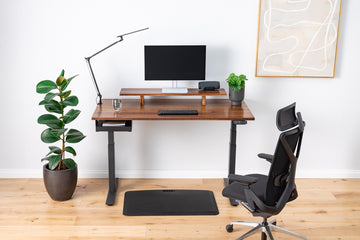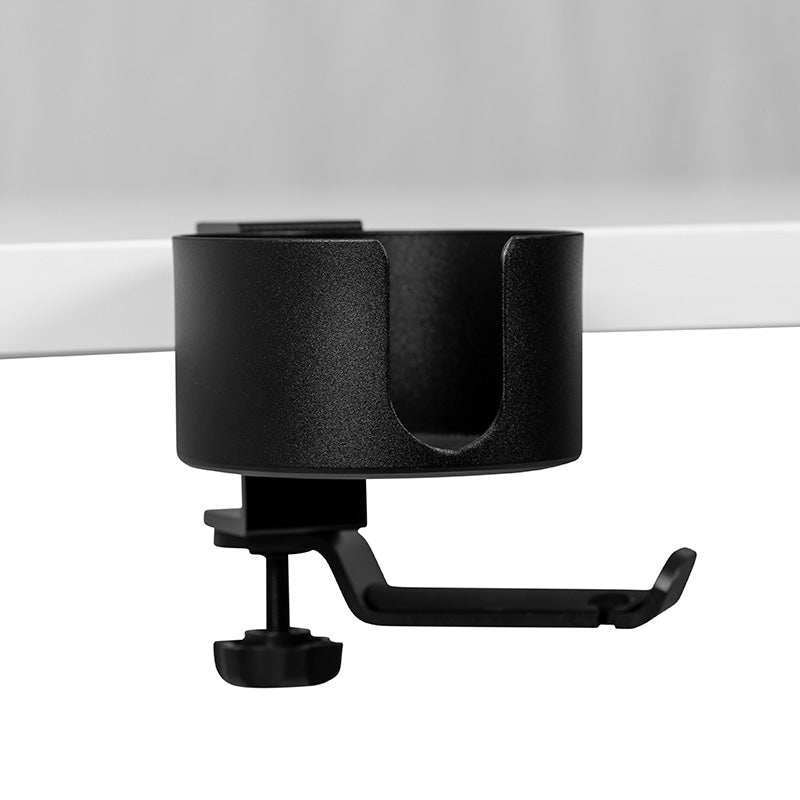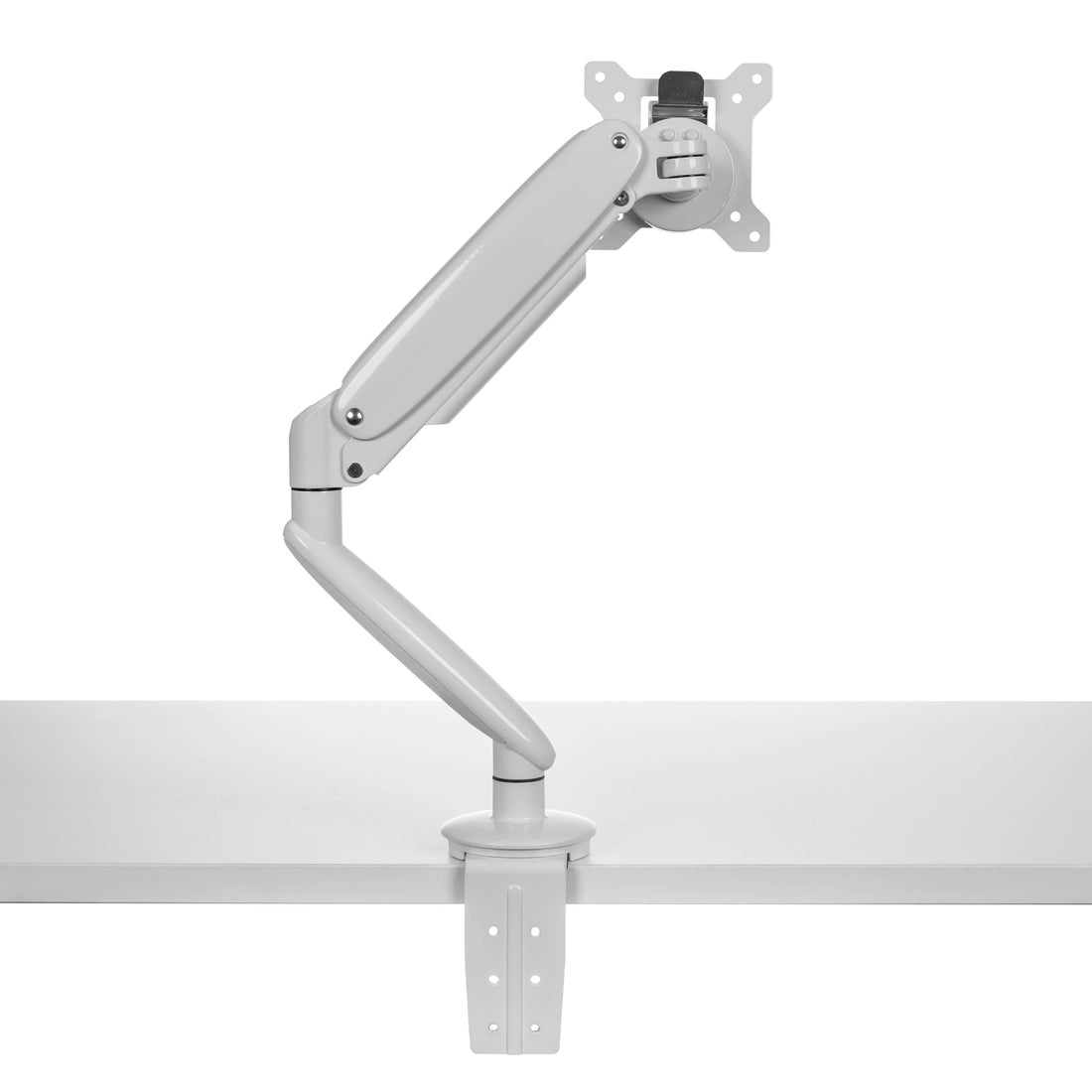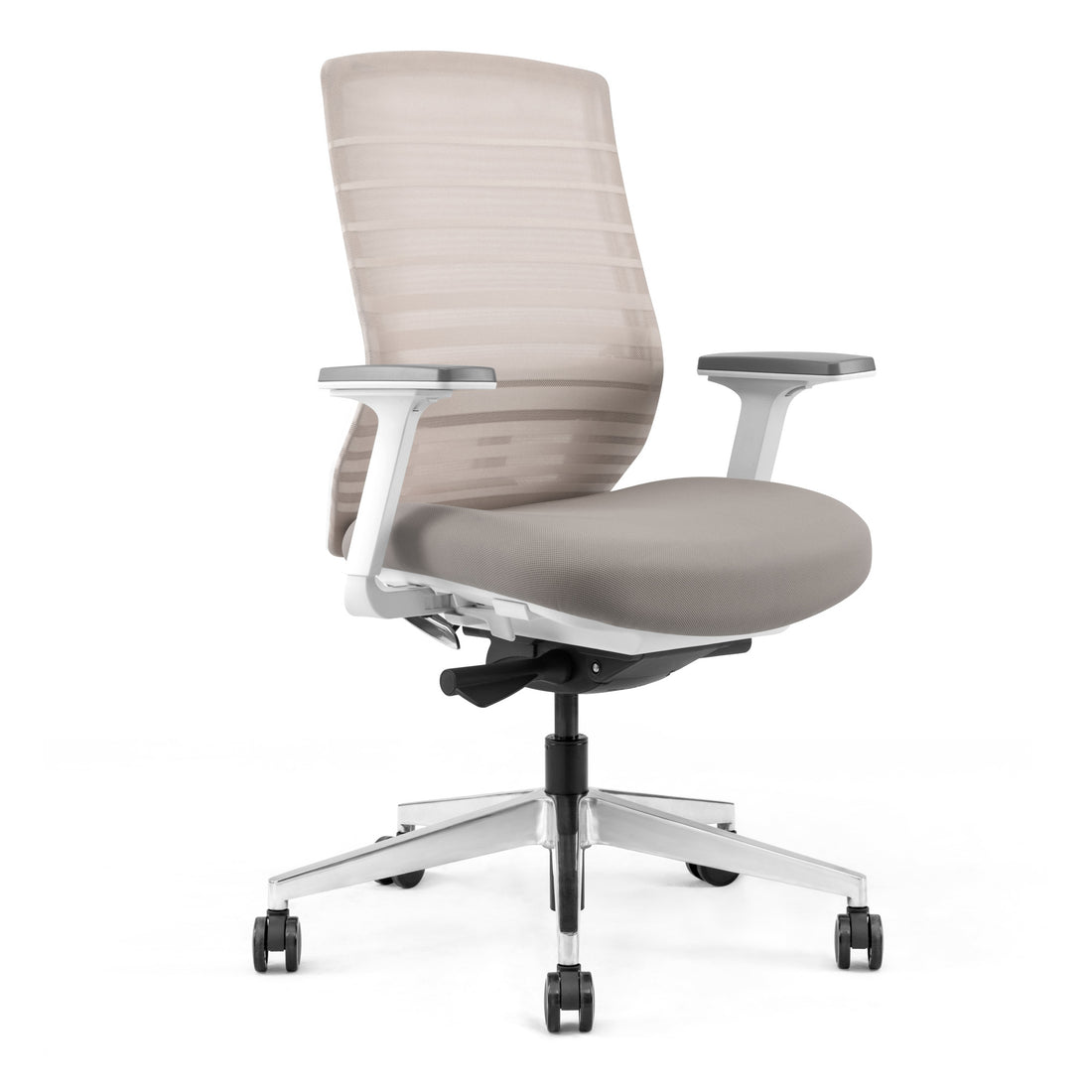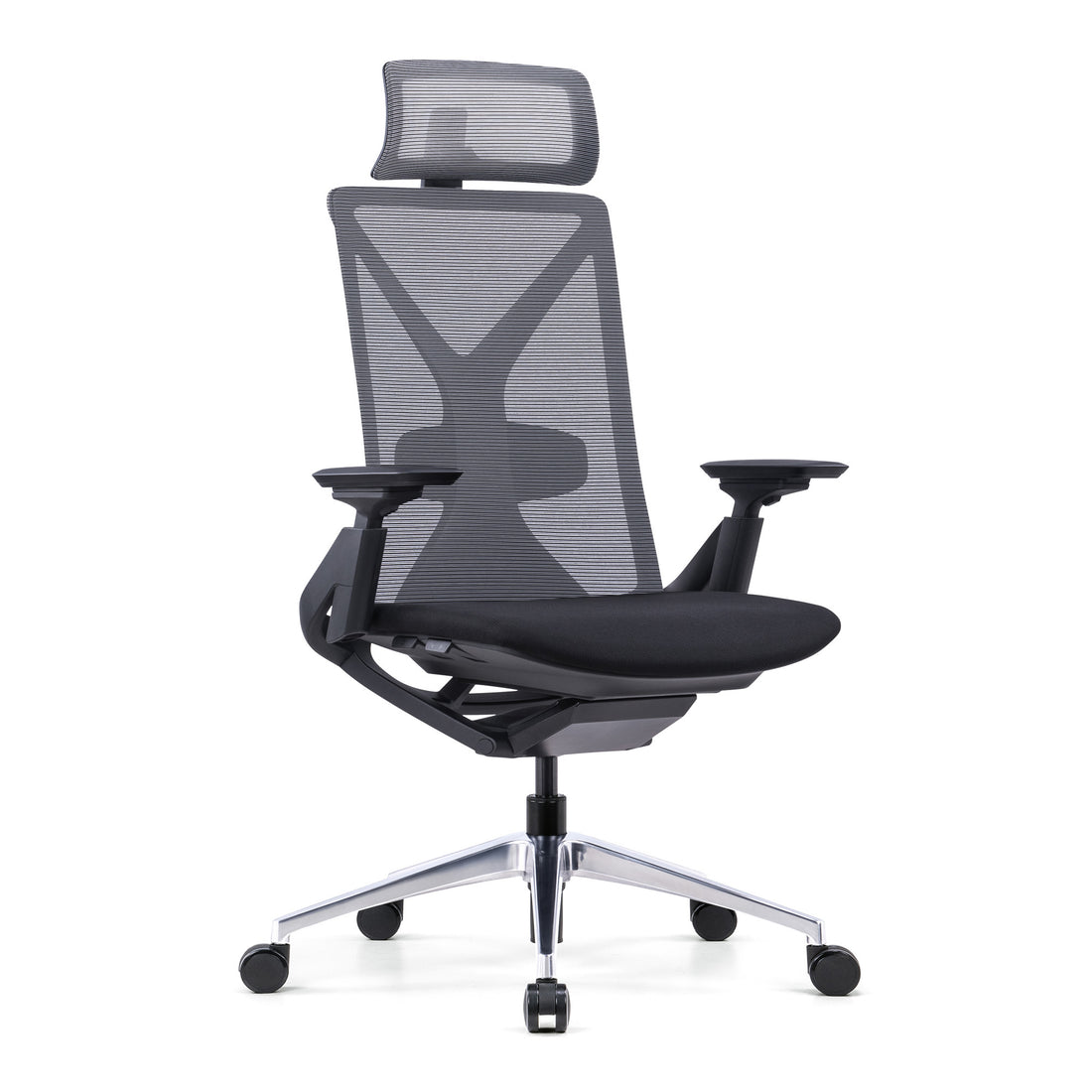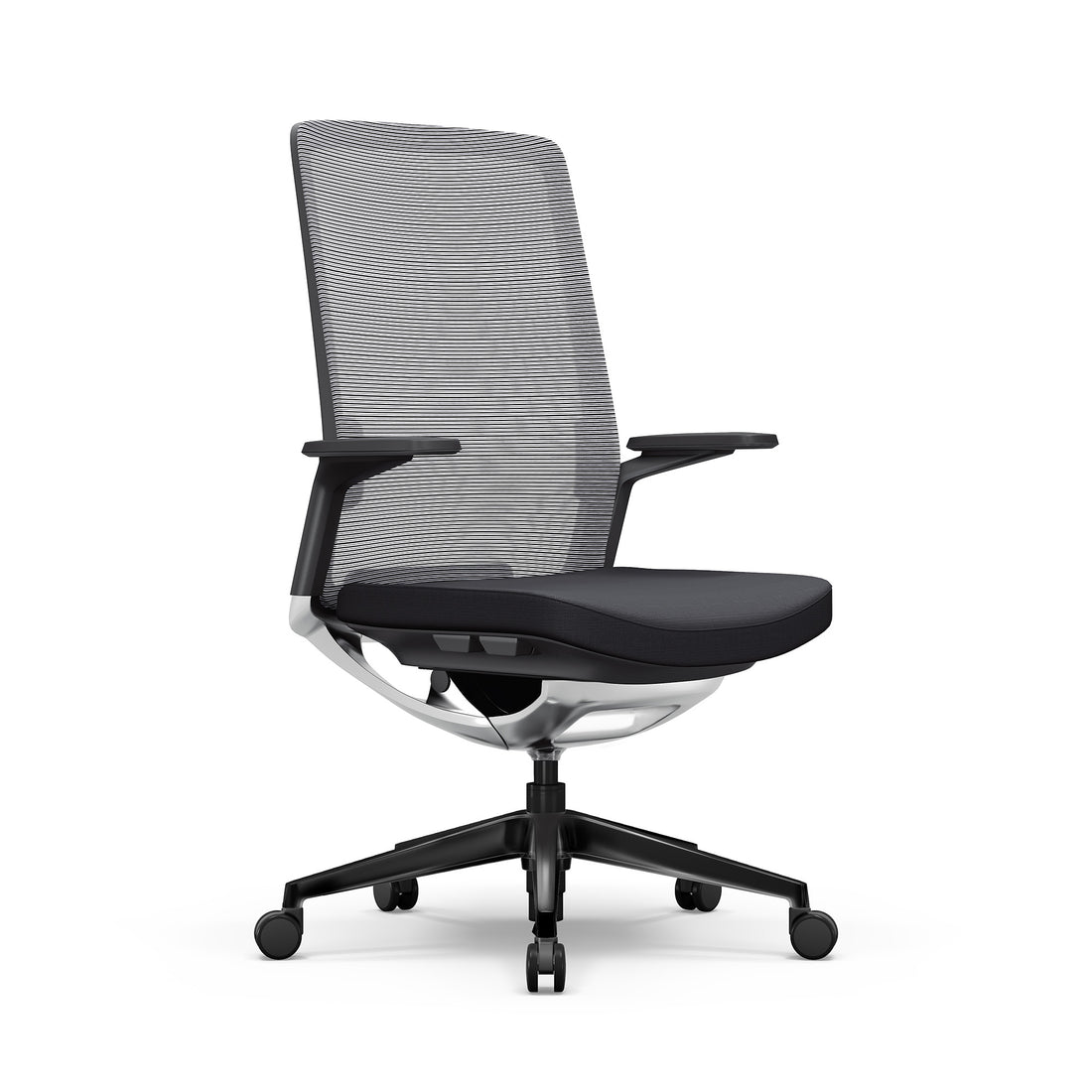
Check out UpDown Desk's PRO Series Electric Standing Desks!
Chronic low back pain is one of the most relevant complaints that physiotherapists see with sedentary office workers. It is attributed to habitual postures and positions, largely due to sitting for long periods of time. Thankfully, there are ways to manage this pain and discomfort while you are working from home.
1. Sitting posture
The best way to ensure that chronic back pain does not flare up is to sit in proper sitting posture while performing our work tasks. Unfortunately, this does not mean cuddling up on the couch with our laptops on our laps, as so many of us tend to do while working from home.
Good sitting posture is easier to describe than it is to maintain, so we aren’t looking for absolute perfection every second of every day. An increased mindfulness of our sitting posture, and frequent adjustments of it, can help immensely. Even small changes will make a tremendous impact!
While sitting, our back should be in contact with the chair, with our knees bent and our feet touching the floor. People have a tendency of slowly inching forward throughout their days, as their heads come closer and closer to their computer screens. This hunched over position leads to a decrease in a person’s natural lower spine curvature, which is meant to help distribute the loads in our body. By bending forward we disadvantage our entire body from its proper force distribution and centre of gravity, leading to problems not only with our backs, but with our necks and shoulders over time.
Research has clearly documented that an improvement in sitting posture leads to a reduction in low back pain. So, before you sit down with your laptop on that big comfortable couch, think again about how much your back will thank you if you head into your home office, or even to your kitchen table!
2. Listen to your body
Our bodies really are incredible machines- they need to be appreciated and cared for in order to keep working properly. This means that listening to the cues that our bodies are telling us are very important. If our bodies feel stiff, they probably need a stretch. There are a few simple back stretches that can promote a healthier, more mobile spine and decrease chronic back pain. Here are our top three favourites:
Cat/cow
- The cat/cow is a range-of-motion exercise for your spine.
- Position yourself on your hands and knees with our head looking straight ahead. Start by arching your back backwards, and extend your neck up towards the ceiling. Inhale while you do this. Hold for three seconds in this position, and then slowly begin to reverse directions by bending your head and neck down towards the floor. Exhale into this position. Hold for three seconds, and return to the neutral starting position. Repeat this process ten times, three times a day for a more mobile spine.
Cobra
- The cobra is an exercise that focuses on extension of our lumbar spine, or low back. This stretch is excellent for office workers since more often than not, our low backs are constantly flexed, as we spend so much time sitting.
- Lay down on the floor on your stomach and place your palms on the floor, directly underneath your shoulders. Breathe in, push your hands down into the carpet, and raise your head and upper back off of the floor. If this is a stretch, stop here. If not, continue to push up through your palms until your elbows are straight, to give you more of an arch in your low back. Hold here for three to five seconds, and exhale while you slowly bring your body back towards the ground. Repeat this process ten times, three times a day.
Child’s Pose
- Begin on your hands and knees. Bring your knees apart and your chest forward while keeping your toes together. Rest your buttocks on your feet and your head on the ground. Breathe into this position for two to three minutes.
- Some variations of child’s pose include bringing your arms up above your head and resting them on the ground, or spreading your toes apart if your hips are stiff.
3. Vary your position often
People who say that variety is the spice of life couldn’t be more correct. Too much of a good thing is not a good thing, which can also be said about sitting.
Any individual, but especially someone who experiences chronic low back pain, should think about varying their position often throughout their work day. They should aim to spend about ⅓ to ½ of their day standing, and try to vary their positions approximately every two hours.
A good strategy for this is to change your position every time you leave your desk to go to the bathroom, or after a lunch break.
Sit to stand desks are a wonderful way of ensuring you can vary your position throughout the day. Since they are adjustable, this also means that they can be more comfortable than a standing desk while sitting, as you can modify the height to match your ergonomic needs based on your height. They are an excellent investment for while we find ourselves working from home, and are far more affordable than the standard ergonomic set up we have in our offices.
4. Engage in meaningful physical activity
All of the suggestions above are a great way to manage your low back pain while at work, but this last suggestion is perhaps the most important. Exercising will not only help you manage your low back pain, but it will likely help you improve your symptoms!
Engage in an activity that is meaningful to you- this could be walking, running, biking, hiking, kayaking, or playing a sport that you and your loved ones enjoy together. Movement truly is the best medicine, and it can do wonders for our chronic low back pain. Even a small change can make a big impact, especially if done consistently.


